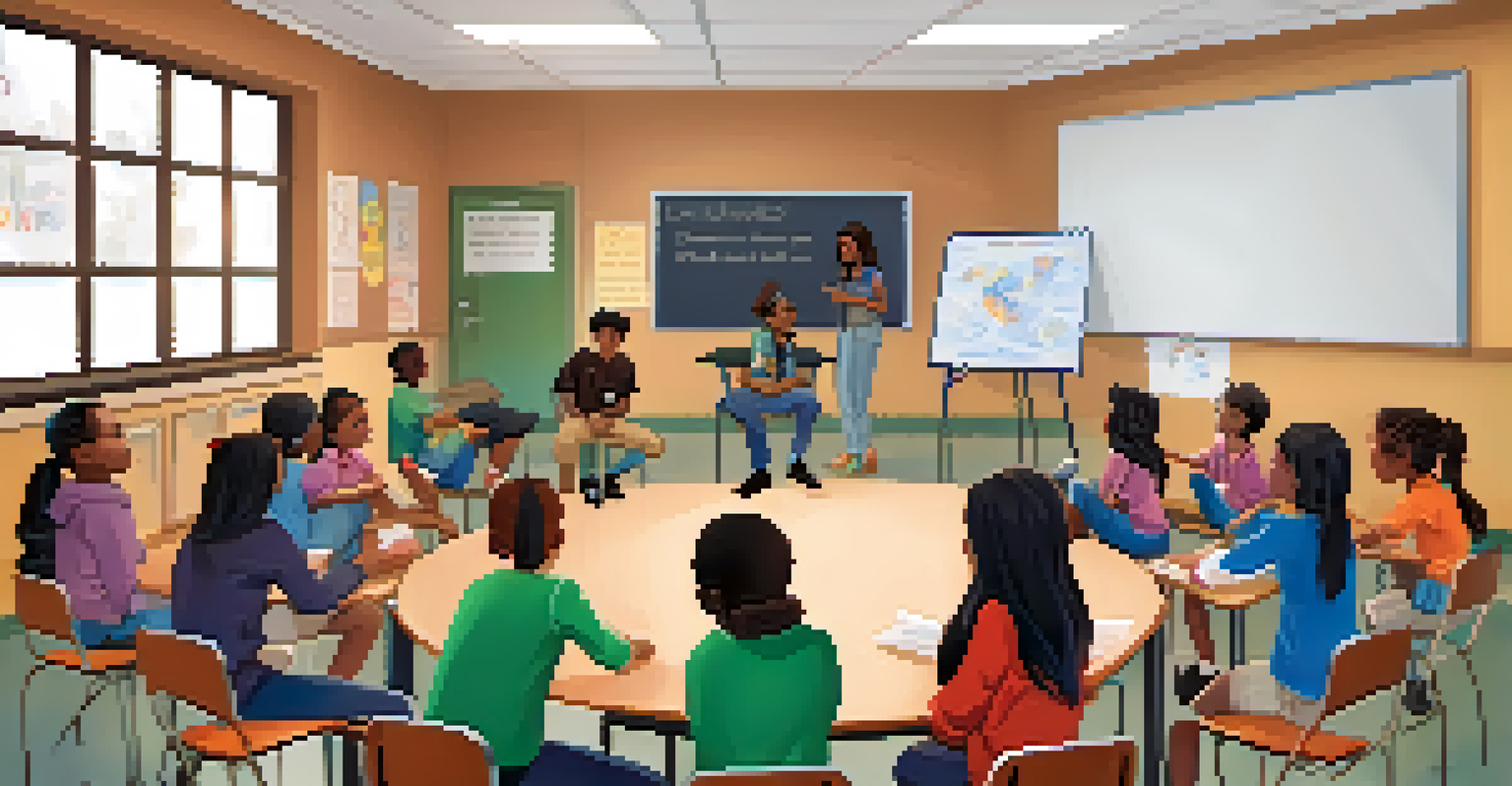Crisis Drills: Preparing Students for Emergencies

Understanding the Importance of Crisis Drills
Crisis drills are essential exercises designed to prepare students for emergencies, whether they be natural disasters or safety threats. These drills help instill a sense of security and readiness among students. By practicing responses to different scenarios, students can feel more in control during actual emergencies.
By failing to prepare, you are preparing to fail.
Engaging in crisis drills also promotes teamwork and communication among students and staff. When everyone knows their roles and responsibilities, the chaos of a real crisis can be significantly mitigated. This collective preparedness fosters a supportive school environment, reinforcing the importance of looking out for one another.
Moreover, crisis drills provide an opportunity for schools to assess their emergency protocols. By identifying gaps in their plans through these simulations, schools can improve their response strategies, ensuring that they are well-equipped to handle real-life situations effectively.
Types of Crisis Drills Schools Should Implement
There are several types of crisis drills that schools can implement to cover a variety of potential emergencies. Fire drills are perhaps the most common, teaching students how to exit the building safely and quickly. However, it’s important to also include drills for lockdowns, severe weather, and even medical emergencies.

Each type of drill serves a unique purpose and prepares students for specific situations. For instance, lockdown drills help students learn how to secure themselves in a classroom during a threat, while severe weather drills educate them about taking shelter during storms. By practicing these scenarios, students become more familiar with the procedures and less likely to panic.
Crisis Drills Enhance Preparedness
Crisis drills help students feel secure and ready to respond effectively during emergencies.
Additionally, schools can incorporate simulations of real-life emergencies to provide a more immersive experience. These scenarios can include role-playing exercises that allow students to engage more actively, making the lessons more memorable and impactful.
Creating a Safe Environment for Practice
To ensure effective crisis drills, it’s crucial to create a safe environment where students feel comfortable participating. This involves fostering an atmosphere of trust and open communication. When students understand that the purpose of these drills is to protect them, they are more likely to engage seriously.
An ounce of prevention is worth a pound of cure.
Teachers and administrators should lead by example, demonstrating calmness and clarity during drills. This reassurance can help alleviate any anxieties students may have about participating. Additionally, providing students with background information about what to expect during the drills can help demystify the process.
It's also beneficial to have debrief sessions after each drill. These discussions allow students to express their feelings about the experience and ask questions, reinforcing their understanding and comfort with the procedures.
Engaging Parents in the Crisis Drill Process
Involving parents in the crisis drill process can enhance the effectiveness of these preparations. When parents are informed about the drills, they can reinforce the importance of safety measures at home. This alignment helps create a consistent message about preparedness between school and home.
Schools can host informational sessions or distribute newsletters detailing the types of drills being conducted and their objectives. By keeping parents in the loop, schools can also address any concerns families may have about the drills. This transparency is key to building trust between the school and the community.
Engaging Parents Boosts Safety Efforts
Involving parents in the crisis drill process reinforces safety measures and builds community trust.
Encouraging parental involvement in these drills can also provide additional support and resources. Parents can volunteer to help organize drills or participate in discussions about improving safety protocols, contributing to a more comprehensive approach to crisis preparedness.
Addressing Emotional Responses to Drills
Crisis drills can evoke a variety of emotional responses in students, ranging from anxiety to indifference. It’s important for schools to recognize and address these feelings to ensure that all students are able to participate effectively. Providing resources for emotional support can help students process their experiences.
Teachers should be trained to identify signs of distress in students during and after drills. By fostering an open dialogue about these feelings, educators can help students cope with any anxiety they may feel about emergencies. This support is crucial in promoting a healthy, resilient mindset.
Additionally, schools can incorporate mindfulness techniques as part of their drill preparations. Techniques such as deep breathing and visualization can help students manage their stress and remain focused during emergencies, ultimately enhancing their overall resilience.
Evaluating and Improving Crisis Drill Effectiveness
After conducting crisis drills, it’s essential for schools to evaluate their effectiveness. This involves gathering feedback from both students and staff to identify areas of improvement. Surveys and debrief sessions can provide valuable insights into how well the drills prepared everyone for real emergencies.
Schools should analyze the outcomes of each drill, determining what worked well and what could be improved. This evaluation can lead to refining procedures, enhancing training for staff, and modifying communication strategies. Continuous improvement is key to ensuring that crisis drills remain relevant and effective.
Emotional Support is Essential
Addressing students' emotional responses to drills is crucial for fostering resilience and effective participation.
Incorporating lessons learned from past drills into future planning not only enhances preparedness but also demonstrates a commitment to student safety. As emergencies can evolve, schools must remain proactive in their approach to crisis preparedness.
Building a Culture of Safety and Preparedness
Ultimately, the goal of crisis drills is to build a culture of safety and preparedness within the school community. When students, staff, and parents are all engaged in the process, it creates a unified approach to crisis management. This collective mindset fosters an environment where safety is prioritized.
Regularly scheduled drills and ongoing training help reinforce this culture. Schools should integrate safety discussions into their curriculum, making preparedness a part of everyday conversations. This proactive approach not only prepares students for emergencies but also instills a sense of responsibility toward their own safety.

By cultivating this culture, schools can empower students with the knowledge and skills they need to respond effectively in emergencies, ultimately leading to a safer educational environment for everyone.